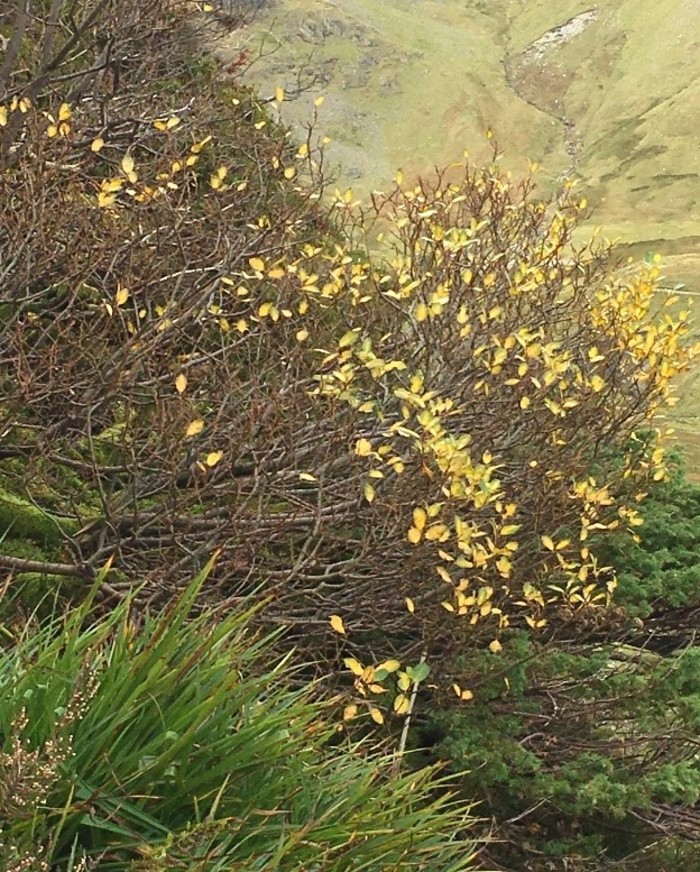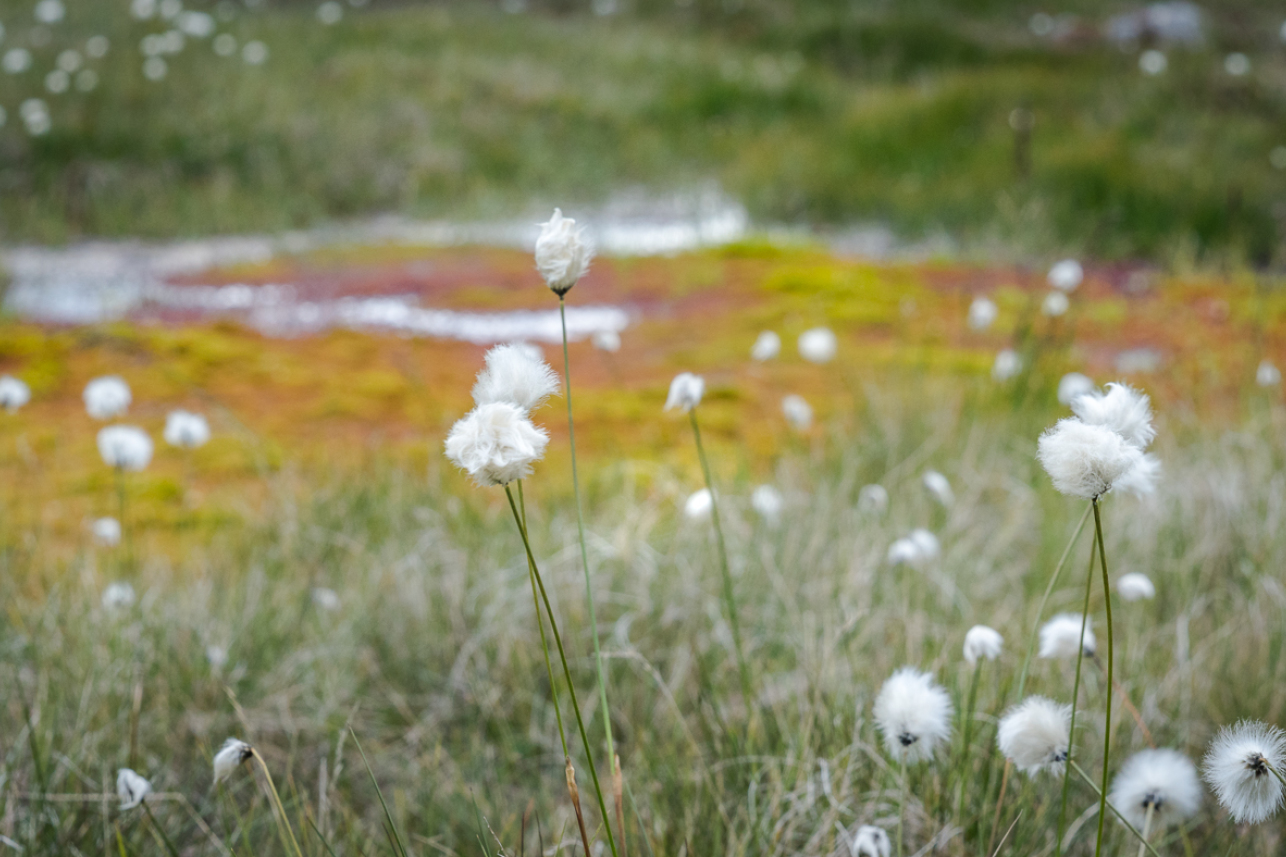Health Check Report on National Parks
Campaign for National Parks' recommendations could lead to wilder National Parks in England and Wales, reports Senior Policy Officer Rosie Simpson.

National Parks are widely recognised among the UK’s wild places. When our Wild Places Survey asked people living in the UK to tell us where their favourite wild places were last year, the highest-ranking results were all National Parks.
The Trust has long been supportive of the UK’s National Parks and has welcomed the Welsh and Scottish Government decisions to designate new National Parks in these countries. However, we are fully aware that nature in National Parks, as per the national and global trends, is struggling.
A new Health Check Report, published last week by the Campaign for National Parks (CNP) in England and Wales, confirms this. The report provides evidence on the health of water ways, woodlands, protected sites and species within National Parks. It also reports findings on wildlife crime within National Parks. While it makes for an uncomfortable read, the report is a valuable contribution to understanding what needs to change for nature to recover in the UK’s National Parks.
Why focus on National Parks?
CNP is marking 75 years since the founding legislation for National Parks was introduced in England and Wales. This legislation followed a movement for greater public access to the open countryside for recreation and the groundswell of appreciation for spiritual renewal in natural landscapes.
The populations of England and Wales have increased considerably since 1949, towns and cities have spread outwards, whilst rural landscapes have been transformed by changes in agricultural production. Over this time, however, the concept and reasons for the UK's National Parks have remained relevant.
Alongside their important societal role, these landscapes have an equally important role for nature. They contain some of our wildest places where natural processes continue to dictate the lie of the land, the meandering course of rivers and which species thrive.
Given their special national value, it's reasonable to assume that these amazing national landscapes are healthy landscapes, where waterways are free from pollution, woodlands are in a stable and recovering condition, moorlands are rich in different species and our rarest species have safe refuge. However, as the CNP Health Check Report reveals, these assumptions aren't supported by the evidence. In our National Parks nature is absent, persecuted and polluted. A sobering reality check for all and critical reading for all of us with an interest in the future of these national landscapes.
Overview of report findings
- Only 6% of the National Parks in England and Wales are actually being managed effectively for nature.
- An estimated 1% of Dartmoor’s deep peat area is healthy.
- In 2022, 39% of rivers and 15% of lakes within National Parks in England achieved good ecological status or higher. Latest available data (2021) for Wales shows that 51% of rivers and 21% of lakes in National Parks achieved good overall status, or higher.1
- In the last five years, 56 out of 62 incidents of raptor crime reported in the National Parks took place in just three of them – the Peak District, the North York Moors and the Yorkshire Dales. There is evidence that links grouse shooting, which takes place on open moorland areas, with raptor persecution.
- There are more Sites of Special Scientific Interest in a worse condition inside England’s National Parks than those outside.
 ^ Moss Campion in Lake District National Park.
^ Moss Campion in Lake District National Park.
Active nature restoration
Despite the report's findings, it remains the case that National Parks in England and Wales are vitally important for protected species and their future in the UK. The report shares this view, noting these landscapes remain among the ‘last refuges for many species on the brink of being lost from the UK. Now we need to ensure they become the places from which these species recover and are able to spread.’
In a time of global biodiversity loss, our National Parks should be at the fore of coordinated, partnership efforts to reverse nature loss. The good news is, there is plenty of restoration potential both in general and for particular habitats in the UK's National Parks, such as:
- Rainforests: The Report cites ‘Between 2% to 3% of the land area in six National Parks – Bannau Brycheiniog, Dartmoor, Eryri, Exmoor, the Lake District and Pembrokeshire Coast – has potential for restoration as temperate rainforest.’ Rainforests are a nationally rare habitat and supporting their recovery would be a huge boost for UK biodiversity.
- Peatlands: The extent of peatland in the National Parks - ‘Peat accounts for 43% of the land area in the English National Parks and 8% of the land area in the Welsh National Parks’ - is a landscape restoration opportunity waiting to happen in National Parks. Some, such as South West Peat Partnership, Moors for the Future, the Yorkshire Peat Partnership and the Great North Bog, have already taken this opportunity on.
- Native woodlands: The report notes there is the potential to double native woodlands to 35% following the philosophy ‘right tree right place’, which will mean open landscapes of heath, heather and moorland will remain open but trees will gradually return to the places they are meant to be.
 ^ Tea-leaved Willow near Helvellyn.
^ Tea-leaved Willow near Helvellyn.
Policy change needed
In addition to active nature restoration within National Parks, for our National Parks to set a national example of what it means for people in the UK to live in harmony with nature, we strongly agree with the following recommendations within the report:
- Peatland: A ban on all burning and afforestation on peatland, a requirement for Forestry England and Natural Resources Wales to remove trees previously planted on peatland and restore these areas to good health by 2030 and an end to commercial peat extraction in National Parks, irrespective of peat depth.
- Wildlife: For governments in England and Wales to follow Scotland’s lead and introduce a licencing system for driven grouse shooting accompanied by vicarious liability for wildlife crime.
- Grazing: Too much for too long.
- Land management: The phasing out of damaging and intensive land management practices (these include drainage, pollution, nutrient enrichment and moorland burning) in National Parks combined with agri-environment schemes that support appropriate grazing regimes (bringing an end to over grazing).
 ^ Sheep grazing.
^ Sheep grazing.
A role for National Park Plans in nature recovery
National Park Authorities in England and Wales are doing what they can to take care of these landscapes with limited resources. The report does not attribute the decline of nature to National Park Authority failings. Instead, it recognises, ‘Some National Park Authorities have already make clear, ambitious and demonstrable commitments to driving the changes needed to secure nature recovery’ and states it would like ‘to see all NPAs advocating for the necessary changes in policy and practice that their extensive expertise and experience shows are needed.’
The ability of National Park Authorities in England to guide change via the National Park Management Plans was enhanced by legislation last year. The Levelling Up and Regeneration Act 2023 introduced new powers for Ministers to make regulations that will require Management Plans to contribute to meeting statutory biodiversity targets, and set out expectations for public bodies operating in National Parks to contribute to the development and implementation of National Park Management Plans and further the statutory purposes of National Parks.
A role for landowners and land managers in nature recovery
Ultimately those with the greatest ability to affect change in land use and management are the landowners. The UK Government can influence landowner and manager behaviours and decisions about land use through its agri environment schemes, including funding for landscape recovery and farming in protected landscapes; schemes which tie public subsidies to demonstrated nature recovery.
The report states the UK Government’s agri environment schemes are essential to driving change and that the financial incentives should be scaled up, ‘with a focus on landscape-scale recovery and supporting farmers to adopt practices to enable nature recovery’ in National Parks.

^ Planting Alpine Cinquefoil on crags near Helvellyn.
Reform needed
The report recommends four reforms for National Parks in England and Wales, in addition to ‘one quick win’.
- 'Make it clear: National Parks are for nature.' Governments in England and Wales must be unambiguous in their expectations and set out reforms to ensure that National Parks are deemed as nature designations, as well as landscape designations.
- 'A New Deal for National Parks.' Core funding for National Park Authorities needs to double and public money payments to landowners in National Parks need to be tied to results for nature’s recovery.
- 'Enforce the law and create new powers to halt harm and drive recovery.' Restricting new development in National Parks has helped preserve the landscape but with nature’s decline since 1949 a new incentive framework is needed to focus action on nature’s recovery within these protected landscapes.
- 'A new ‘People’s Charter’ to ensure National Parks thrive into the future.' National Parks were first founded on a people’s vision. 75 years on is time to renew that vision.
- 'One quick win: Provide the evidence on the state of nature in National Parks.' The lack of data about the health of species, peatland and native woodlands in National Parks hinders effective planning for nature recovery in these landscapes. Only three of 13 National Park Management Plans contained baseline data reporting and only one plan – for the Yorkshire Dales – included specific, timebound targets for habitats, species and water quality. There seems no justification for why all National Park Plans could not be including nature recovery targets and evaluating progress. The report calls for a systematic reporting framework for monitoring the condition of nature in National Parks.
Find out more
Since publication the report has received widespread media coverage. National Parks England has responded to the findings and so have National Park Authorities. We encourage our Members and supporters to take an interest in the health of these national landscapes and add your own voices to calls for them to become wilder and healthier.
- Read the full National Parks Health Check Report.
- Find out how you can take action for National Parks in England and Wales.


